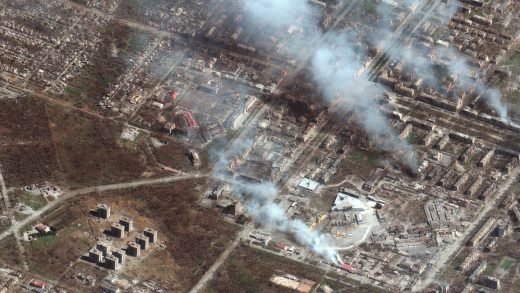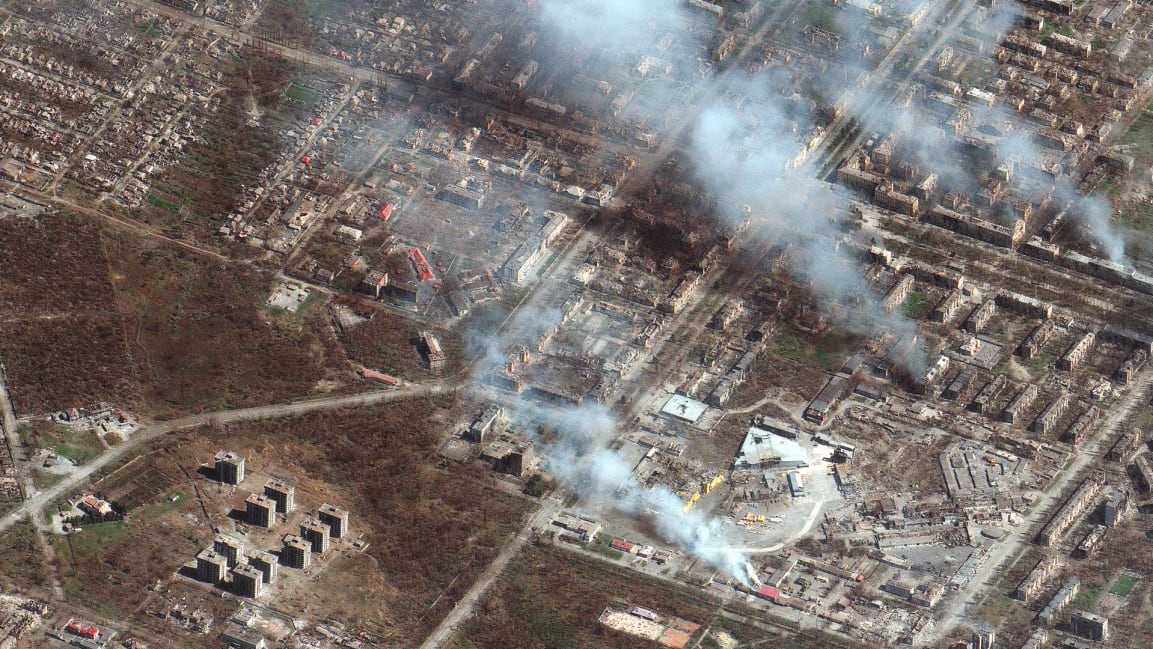A geographer explains how satellites give an important—but partial—picture of the war in Ukraine
As the war in Ukraine rages on, people around the world continue to look to the sky for information.
An unprecedented number of so-called very-high resolution (VHR) satellite images have been marshaled to document and communicate to the public the brutality of the Russian invasion of Ukraine. The images conveyed are jarring: burning buildings, destroyed bridges, mass graves. But there is more than meets the eye to mapping the consequences of this (or any) war with satellite images.
It’s helpful to think of a satellite image as a prism that both clarifies and distorts. Satellite images enhance our ability to map—that is, to visualize and measure—wartime damages. Over a region as large as Ukraine, such damages are inevitably scattered over broad distances, and satellites can be used to chart these far-flung damages much more efficiently, and certainly more safely, than could be done through traditional site visits by, say, an NGO. Imaging satellites also collect a broader range of information than is visible to the eye by measuring infrared or radar energy. This additional spectral sensitivity is especially handy in teasing out damage across different kinds of materials and features in complex landscapes like cities.
As impressive as the spatial detail of VHR images may be, there is arguably even more information in the cadence of image collection. Satellites like Maxar’s WorldView-3 or Planet’s flock of Dove satellites collect new images every day or two over Ukraine, or at least as often as the clouds allow. That frequency of observation means that the invasion can be remotely monitored at a tempo that tracks the pace of the war itself.
But the satellite’s gaze also introduces blind spots. Landscape details that are too small or subtle or changes that are too short-lived to cross the “threshold of detectability” are left out. Damage needs to be sufficiently large to be detected, at least as large as one of the image’s pixels (for VHR, that’s less than 5 meters or 16.4 feet). Damage to a city block, for example, needs to offer sufficient contrast from its surroundings or must be different enough from the city block’s appearance in earlier images in order to be detected. In turn, the absence of detectable damage in an image does not indicate an absence of conflict or violence, in part because some regions within the city are precluded from view. For example, since satellites operate with a top-down view, widespread damage to the walls or foundations of buildings could remain hidden in satellite images but be obvious from the ground.
The media’s primary use of VHR images to map damages in cities introduces another kind of blind spot. The urban focus certainly makes sense given that close to 70% of Ukraine’s population before the invasion resided in cities, and military attacks have largely focused on populated places. However, this city-centric view comes at the cost of attention toward broader environmental consequences, such as pollution of Ukraine’s water and air and the destruction of croplands and agricultural infrastructure needed for production, transportation, and storing of food. These have serious consequences on regional and global food security and climate change mitigation but tend not to receive the same level of media attention.
Many VHR-imaging satellites have the capability to map all of Ukraine nearly every day, but this temporal dynamic is often eschewed in publicly released VHR images; rather, it’s a standalone image that’s widely disseminated. A single image can offer a visual anecdote from a moment and place within a war’s complex chronology but says little about the human cost of the damage, let alone the intent behind the damage. How was the damaged building being used during the war? Was the building occupied, had it already been abandoned before the attack, or was the building serving as a temporary shelter to those displaced from their homes? The lack of context stands in contrast to the narrative and detail that a war correspondent would provide alongside their photographs.
As the war continues, it will take more than just higher-resolution VHR satellites to capture more of the war’s effects. The full timeline of satellite images can be used to highlight both acute and repeat damages in conflict hotspots. This kind of multitemporal approach is commonplace for monitoring deforestation and hydrological changes but has less uptake for monitoring conflict (with exceptions) but would require broader access to VHR images than is commonly available. Taking a more comprehensive satellite view of conflict effects encompassing cities as well as rural, agriculturally productive regions would also spark new narratives of the vulnerabilities, as well as the resilience of populations and landscapes across Ukraine.
Pursuing these opportunities will have far-reaching benefits for the next stage of the conflict in Ukraine; as well as the next war, wherever it may be.
Jamon Van Den Hoek is an associate professor of geography and geospatial science at Oregon State University.
(38)



